Created by Elizabeth Ito, the animated series City of Ghosts explores the history of different neighborhoods in Los Angeles through friendly ghosts that make the past of this metropolis real. Our guides into these adventures, created in documentary style, are a diverse group of children, the Ghost Club, who navigate each encounter with curiosity and compassion.
For episode six, focused on Koreatown, the creators recruited professor Felipe H. Lopez, a Zapotec scholar to help them portray the Oaxacan community of L.A. With Ito and producer Joanne Shen’s support, Lopez brought authenticity to the depiction of certain visual elements, such as the grecas de Mitla, geometrical designs specific to the Indigenous people of Oaxaca. More importantly, he voices an animated version of himself, as well as Chepe, a lovable alebrije ghost at the center of the story. Lopez’s dialogue is both in English and Zapotec.
A native of the small Oaxacan community of San Lucas Quiaviní, where the vast majority of the population speaks Zapotec, Lopez has become a binational bastion in the preservation of this Indigenous language and the culture it gives voice to. He came to the United States when he was 16 years old speaking mostly Zapotec. He learned English first and then he worked on improving his Spanish while at Santa Monica Community College.
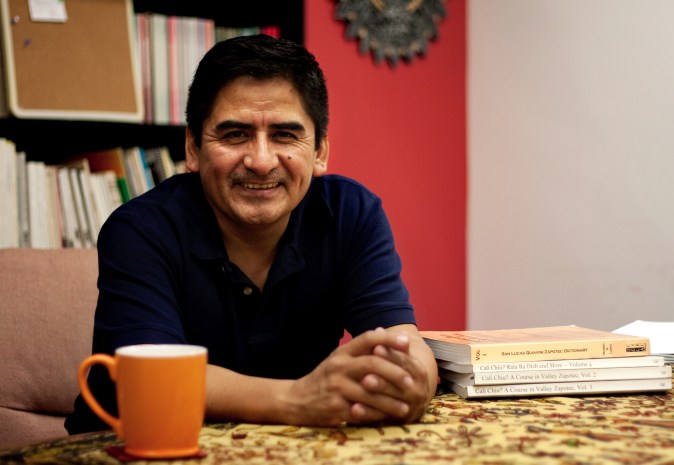
In 1992, Lopez got accepted into University of California, Los Angeles (UCLA) in the Latin American studies program; he has restlessly devoted himself to preserving the identity of the Zapotec diaspora, which has been present in the United States since the days of the Bracero program. Lopez first found support in linguist Pamela Monroe with whom he created the first trilingual Zapotec dictionary, which was published in 1999 via the Chicano studies department at UCLA. Today he is a postdoctoral scholar at Haverford College.

Below, he expands on his life’s work and the significance of the positive mainstream representation of Indigenous peoples.
What was the impulse or situation that made you realize you wanted to dedicate your professional life to preserve the Zapotec language and culture?
There’s always this relationship between economic gains with language. I saw how a lot of families in the Oaxacan community were raising their kids. Even if they didn’t speak Spanish fluently, they wanted to teach their kids Spanish rather than Zapotec. In a sense, they didn’t see a lot of usefulness in teaching their kids Zapotec. Interestingly, some of them actually were teaching their children the little English they knew. They even skipped teaching them Spanish. The parents would speak with each other in Zapotec but then would talk to the kids in English.
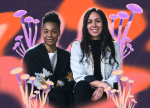
City of Ghosts continues the work we started in 1992.
Being a college student back then and thinking about those things made me realize that the language was being lost and being substituted by either Spanish or English. At that moment I thought, ‘Maybe my language is going to be lost. I’ve got to do something about it. Even if it is just to leave a record. I want it to at least be known that we spoke this language at one time.’ That’s what really drove me to seek out somebody to help me because I’m not a linguist. Ever since then, we’ve been creating a lot of open source materials in Zapotec for people to use. We now have dictionaries. We’ve really used the technology in order to make our language, our culture, and how we are visible. City of Ghosts is another component that continues the work we started in 1992.
One of the interesting things about Indigenous languages is that sometimes they are not seen as real languages. You have this battle against the established ideology that Indigenous languages are not really languages. It’s almost like being salmon going against the current, if you’re trying to preserve your language because there are very few spaces for you to use your language and it’s not being taught in public schools in Mexico. But I was fortunate to be able to teach one of the very first courses in Zapotec. In 2005, UCSD [University of California, San Diego] asked me to teach a course in Zapotec. We needed to create all the materials from scratch because unlike Spanish or English or French, which are the dominant languages, you have tons of materials. If you want to teach Spanish you can go to the library and you have tons of materials to teach. But for us as Indigenous teachers we really need to create materials.
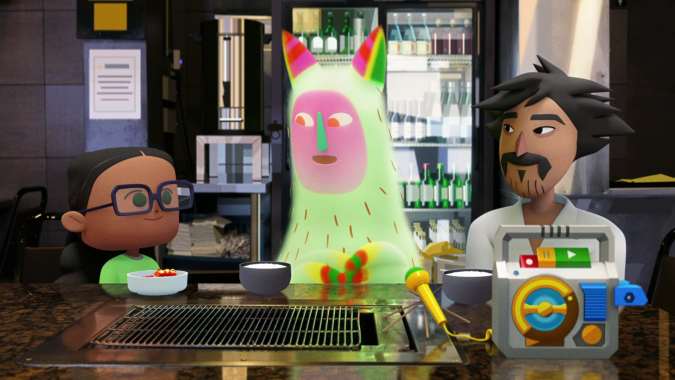
Language is deeply connected to how a culture sees the world. In that regard, why do you think it’s necessary to protect and teach Zapotec and other Indigenous languages in Mexico?
A lot of our Indigenous knowledge is embedded in the language. For example, when I think about how we’re being taught math in school from a Western point of view, we have the decimal system of counting: 10, 20, so on. But in Zapotec we have a different counting system, which is a base 20. We do 20, 40, and 80. Sadly, in Mexico something people say, ‘Why do you want to preserve the language? It’s not even a language. It’s a dialect.’
Fortunately, last year, I think if I’m not mistaken, Mexico changed the constitution to recognize more than 68 languages spoken in Mexico as national languages. There has been a long struggle. I’ve been doing work both in the U.S. and Mexico. Currently I’m teaching a free course on Zapotec in one of the universities in Mexico, because I want to contribute. Indigenous languages are important because they represent our history. They represent our identity and the ways in which we see our surroundings. There are even words in Zapotec that I can’t even translate into Spanish because there are no concepts that are equivalent. They need to be explained.
With the constitutional changes that you mention and someone like actress Yalitza Aparicio inspiring conversations about racism in Mexico and across Latin America, do you believe we are on the brink of a deeper appreciation of Indigenous culture and language?
It’s interesting that you mentioned Yalitza because when she first came out people attacked her. They would say, ‘She’s an Indian. She doesn’t deserve to be there.’ It is the sentiment that has endured in Mexico and Latin America. It’s a colonial mentality. If you look at the soap operas and Mexican TV shows just about every single actor or actress is white. There has been a push historically for Mexico to aspire, to be white. We, as Indigenous people, have been perceived to be a problem for modernity. They feel like, ‘How can Indigenous people be modern?’ But one of the things that I keep telling people is that we have very flexible identities because, as Indigenous communities, we have this paradigm between tradition and modernity: tradition being our Indigenous roots and modernity being the mestizo or European culture.
Indigenous languages are important because they represent our history.
We tend to be very fluid and move into different cultures, into different eras. I can speak my language in my pueblo, but at the same time I can use the Internet and I can speak English.Being Indigenous is never a detriment.In Mexico, the dominant culture, the politicians and the [non-Indigneous] intellectuals, see us as something less than Mexican. They speak about Mexicans versus Indigenous people. I’ve always questioned that because they like to talk about Mexico’s Indigenous roots, yet ostracize and put us on the margin. When they speak about Indigenous communities, they tend to think of us in a museum because once you put us in a museum it means that we no longer exist. There is this contradiction in terms of where we are, where we fit in Mexican society. That’s why we’re pushing so hard to make ourselves visible.
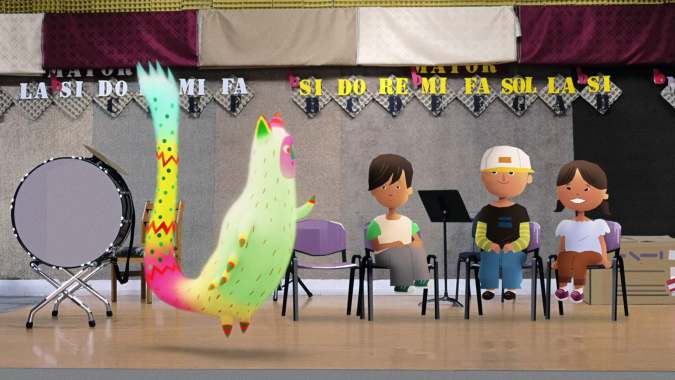
Specifically speaking about Zapotec people, and other immigrants from Indigenous communities, in the United States, what are the major obstacles in resettling?
Indigenous immigrants go through two steps of assimilation, because a lot of us who move into the States, we bring our indigenous language and culture. But the dominant culture that exists in LA is a Mexican or Mexican American culture. It’s a mestizo culture and there’s Spanish. So we as Indigenous people first need to assimilate into that culture and then assimilate into the mainstream culture. We need to speak English, but we also need to speak Spanish. There are two steps of assimilation for us to even try to situate ourselves in mainstream American society.
Tell me about your experience working on such a unique show as City of Ghosts, which really digs deep into the cultural fabric of Los Angeles. What convinced you that this could be positive for Indigenous communities?
One of the things that I asked Joanne [Shen] was, ‘How much say do I have?’ Because I didn’t want to be there if they already had an idea and they just want me to emulate something. So she said, “No, we want to sit down with you and talk about what are some of the important aspects of Zapotec society and what is it that really impacts you guys? How do you see the world?” That was one of the most important things for me in order to agree to do the project.
We had several meetings in terms where they asked me questions. Once I looked at the whole script, not just mine but also those for the alebrije ghost Chepe and Lena who is voiced by Gala Porras-Kim, I made some changes according to how I felt it represented Zapotec culture. For example, tying the idea of the ghost with the idea of the nahual orthe alter ego in Zapotec and Mesoamerican culture, as well as the use of alebrijes and the colors, which properly represented Zapotec culture on the screen.
I hope it makes people at least curious.
They were very sensitive and they wanted to get it right. I really commend them for that, because I’ve worked in projects where they don’t really care. They have an agenda. But for this project they were so attuned with me.I think that’s what makes City of Ghosts such an important program for kids and just for the public at large to understand who the Zapotec are, because when we think about the Mexican community we assume that everybody speaks Spanish. This program, and specifically episode six, will help people to at least begin to rethink Mexican society and that not all Mexicans speak Spanish. Not all of them are mestizo, but rather that we are a multilingual and multicultural society, and we are bringing that to the States. I hope it makes people at least curious.
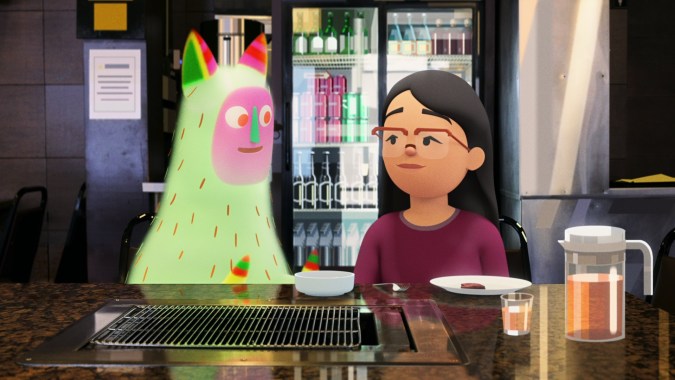
One aspect prominently mentioned in your episode is how certain Oaxacan communities use a whistling language. Why was this a significant element?
To be honest with you, I have no idea where it came from, but as far back as I remember when I was a kid we would just whistle to communicate basic phrases to each other. Also when we go to work on the field and you see somebody far away, you whistle at that person just to get some information like, ‘How are you doing? What’s going on?’ Since, we didn’t have any phones back home then, we whistled to communicate, but it’s not entirely just Zapotec communities. There are other Indigenous communities in Oaxaca and Mesoamerica that use whistling as a means of communication. So when I was asked to be part of the show, I did a lot of whistling in the episode just demonstrating how we communicate and that we don’t need words. Whistling is another expression of language.
Do you feel the show, your episode in particular and also the episode about the Tongva people, the original inhabitants of this area, can serve as learning tools for kids or people in general unfamiliar with Indigenous communities in LA?
Definitely. The Tongva people are who we often know as the Gabrielinos. They’ve been here for hundreds of years, but yet we know very little about them. When you think about Angelenos you think about Mexicans or mestizos at the pueblo of Los Angeles. But we rarely talk about the Indigenous people in LA. By having them in this show, as well as the Zapotec, we begin to have this conversation go beyond thinking about this land onlyhaving Latinos, African Americans, and whites. There are these hidden multicultural societies here that have been fighting and resisting against all these forces.
It’s the first time that we see Indigenous communities well represented and not objectified.
One thing that is so interesting to me is that when we are on the margins, we tend to fight and resist at the margin to maintain our language and culture. So then by bringing us into the light and being visible, even by asking, ‘Where do you guys come from?’ We can say, ‘Well, we’ve been here all along. You just haven’t seen us.’ With these particular episodes on the Tongvas and the Zapotec, all of a sudden some people might learn something. I’ve seen on Twitter the young Indigenous people express they feel so proud of the fact that Indigenous people are represented in this show. There’s something unique about this show, because it really brings some of the historical aspects of the composition of LA, specifically of the Pico-Union area.
The most important thing people should take out of those two episodes that talk about Indigenous communities, it’s the very first time that we see Indigenous communities well represented and not objectified, but just as human and what they do in everyday life. And also how we bring our traditions and cultures to some of the megacities in the world, coming from small communities, such as mine where we have about 1700 people, yet we are being represented in such an incredible episode.
City of Ghosts is streaming on Netflix.




